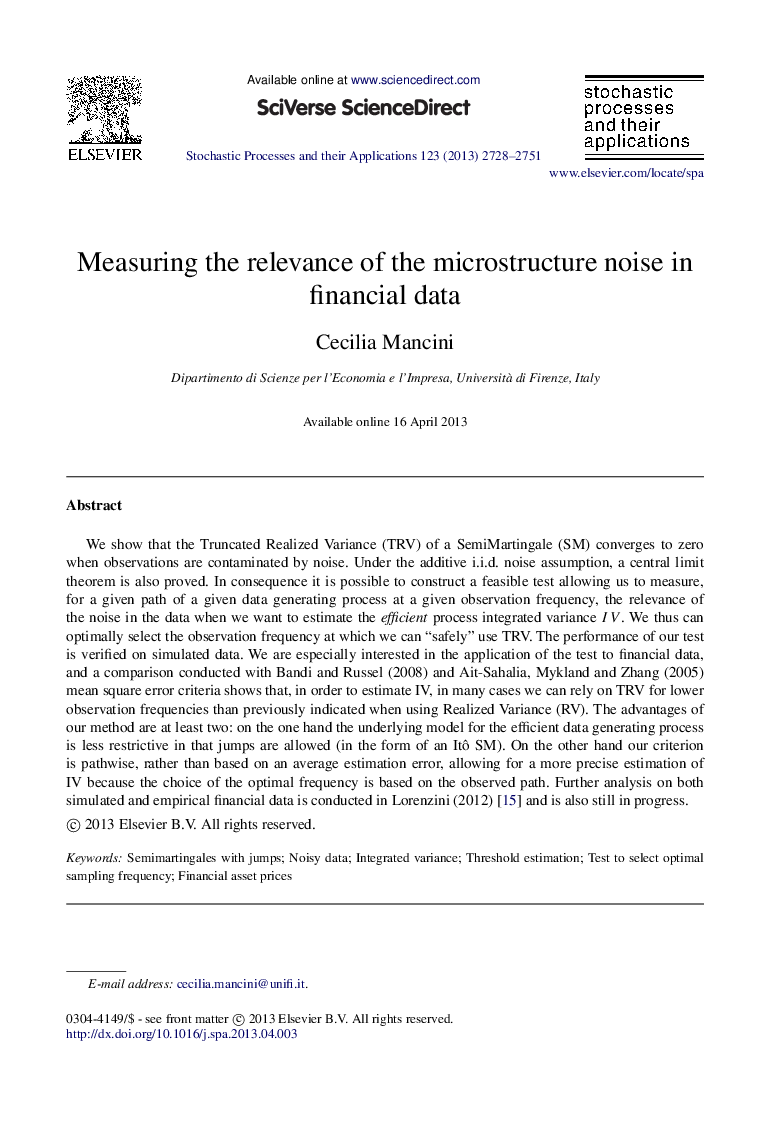| Article ID | Journal | Published Year | Pages | File Type |
|---|---|---|---|---|
| 10527216 | Stochastic Processes and their Applications | 2013 | 24 Pages |
Abstract
We show that the Truncated Realized Variance (TRV) of a SemiMartingale (SM) converges to zero when observations are contaminated by noise. Under the additive i.i.d. noise assumption, a central limit theorem is also proved. In consequence it is possible to construct a feasible test allowing us to measure, for a given path of a given data generating process at a given observation frequency, the relevance of the noise in the data when we want to estimate the efficient process integrated variance IV. We thus can optimally select the observation frequency at which we can “safely” use TRV. The performance of our test is verified on simulated data. We are especially interested in the application of the test to financial data, and a comparison conducted with Bandi and Russel (2008) and Ait-Sahalia, Mykland and Zhang (2005) mean square error criteria shows that, in order to estimate IV, in many cases we can rely on TRV for lower observation frequencies than previously indicated when using Realized Variance (RV). The advantages of our method are at least two: on the one hand the underlying model for the efficient data generating process is less restrictive in that jumps are allowed (in the form of an Itô SM). On the other hand our criterion is pathwise, rather than based on an average estimation error, allowing for a more precise estimation of IV because the choice of the optimal frequency is based on the observed path. Further analysis on both simulated and empirical financial data is conducted in Lorenzini (2012) [15] and is also still in progress.
Related Topics
Physical Sciences and Engineering
Mathematics
Mathematics (General)
Authors
Cecilia Mancini,
